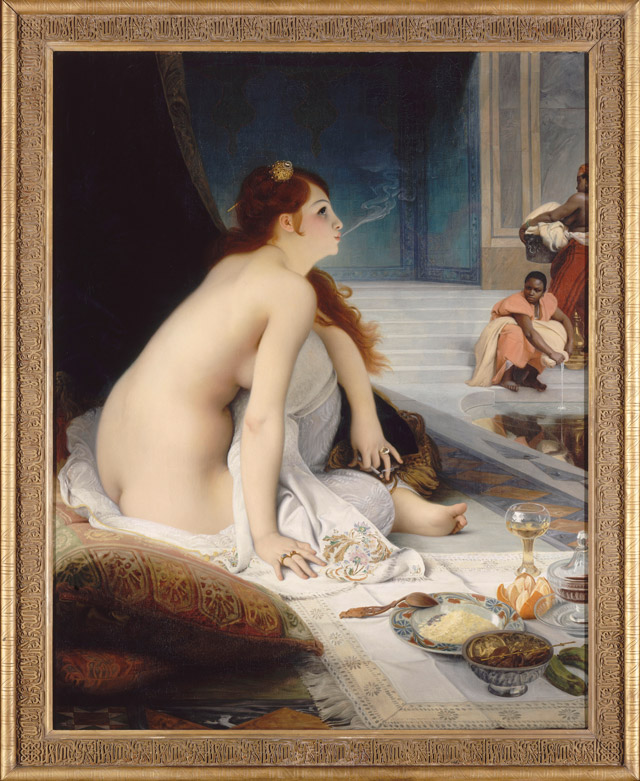The White Slave
History

The White Slave, 1888, Jean-Jules-Antoine Lecomte de Nouy, French, 1842-1923, oil on canvas, 59 x 46in., Musee des Beaux-Arts, Nantes. © RMN-Grand Palais / Art Resource, NY
Based on Jean Lecomte du Nouÿ’s 19th-century French Orientalist painting of a white courtesan in a harem, this canvas departs from Wiley’s other work in that most of the details remain true to the original scene. Orientalist scenes were rife with sexual innuendo and in their desire for the exotic. It is an aspect of painting highly criticized as an outgrowth of the Colonial era. In this painting, the textiles, food, architecture, and figures in the background—two black women washing laundry—remain. Wiley replaces the nude woman with the image of a fully clothed young man from the Indian Subcontinent. With this substitution the artist plays with the original work’s assumptions about sexual desire, racial and class divisions, and western idealizations of an “exotic” East.

